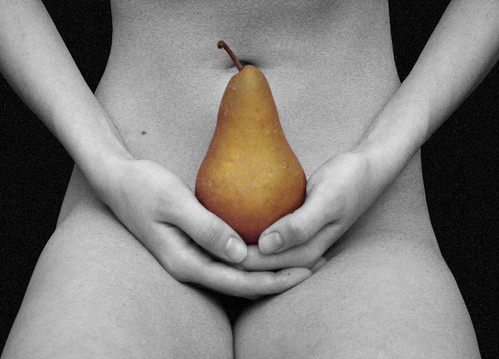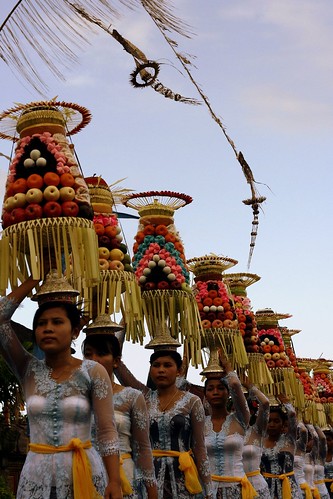The Purple Dress Reviewed on Scent Hive
Tea, Wine & Champaca Absolute
Champaca absolute is one of the most complex natural essences, and despite its immense beauty, not an easy one to work with. Especially this is the case when the flower is intended as the star of the show. It’s density and potency sometimes get in the way of revealing its beauty. It also poses two additional challenges – from a commercial point of view: it is neither affordable nor particularly understood or favoured by the Western world. Champaca is a note that is much prized in its country of origian – India – but only recently has begun to cross the East/West border and be featured in select few Western perfumes. And even than, it doesn’t always receive justice.
My impression is still a bit divided when it comes to this new interpretation of champaca in the Tom Ford Private Blends collection. Like Linda Pilkington’s Champaca there is rice-steam and subtlety of tea to it underneath it all, which I find both very suitable and complementary for champaca absolute. Interestingly, from all the rice-steam fragrances I've experienced, this one delivers the feel the best despite the fact that it is not "supposed" to do so (judging by the list of "notes" released by the company); also, there is no synthetically musky dry down to get in the way of enjoying this unusual floral.
At the same time, it is way fruitier than champaca absolute is, which make the name a bit misleading. Perhaps the flower in full bloom portrays more of this fruitiness, typical of its sister the white magnolia; but the effect takes away from the rarity of this perfume as it brings to mind too many typical fruity florals. Thankfully, this common effect is not dominant and for most of its duration on the skin, Champaca Absolute delivers that rare thing – a subtle big floral. My first thought when wearing Champaca Absolute was - "this is how I would have wanted KenzoAmour to smell", which goes to show you how much of a prettified champaca this one is.
There is much of the exotic in here, from banana-leaf wrapped steamer rice and tea to the large golden petals of this admirable magnolia, dipping slowly in warm plum wine. The scent lasts well beyond expected, and is only a tad overbearing for a few minutes in the beginning (at the fruity-floral phase). While it does linger on clothes after it departs from the skin – it is actually a pleasant surprise to find it there, like a sweet memory of Malaysian food enjoyed the evening before in candle-light. It is just a little too pretty and little too simplified for champaca, but if that would make the West understand and appreciate champaca more - perhaps it is a good thing.
The notes include top notes of: Tokaji wine (something I’ve only heard about when reading about the Baron von Münchhausen’s adventures in Turkey), cognac, bergamot and davana
Heart notes of: champaca, broom, Phantomia orchid and night blooming jasmine
Base notes of: vanilla, amber, sandalwood and marron glacé (candied chestnut)
I would say it starts off like plum wine (perhaps the Tokaj and davana, which is a boozy smelling type of artemisia), continues into magnolified-fruity champaca with the addition of rice and tea like notes (perhaps this is the starchiness of the candied chestnuts) and boils down to vanilla and a woody amber. It is semi-linear though, as the changes are not that dramatic and it generally keeps its original shape throughout.
P.s. First it was Velvet Gardenia, and now the newest addition to Tom Ford’s Private Blends proves my lack of integrity. It just occurred to me yesterday that the ferocious ad
was really making fun of men who like porn, rather than being demeaning to woman. Isn’t that a convenient way to get around the bush?
Snowy Night
It's snowing for the first time this year, and I'm snuggling up in bed snuggled up in my cozy pyjamas and perfumed with my latest version of The Purple Dress (with champaca, henna flower, broom and oud) and wrapped in Kyara incense smoke.
What would you wear when it first snows? Share your thoughts below and enter to win a sample of The Purple Dress.
Sira des Indes
The latest from Patou, Sira des Indes, signifies the hope of the return of classic perfumery in at least some of its glory. Despite the rundown of notes for Sira des Indes, which seems quite conformist and girly in an “I’ve Smelled This Fruity Floral Before” way, it is not.
Well, let me back off a little by saying that there is something familiar about it; familiar in a good way. First of all there is the familiarity of cooked fruit – primarily banana and pear. I can’t say I am noticing any berries and the bergamot is very muted as well. The cardamom, on the other hand, is there to complement the banana in a warm, seductive way, much as it does so in the dessert that inspired this perfume.
Than, there is also something classic about it. Perhaps I am reminded of the indolic jasmine of Joy, of seductively cloying narcissus as in Narcisse Noir and Vol de Nuit. There is also some champaca, and in this context it is a continuation of the banana-semolina pudding: fruity, warm, sensual and soft, with rare glimpse of magnolia peachiness. As I mentioned earlier, champaca is a very rare note to find in Western perfumery, and especially a French perfume. There is not a lot of it here (not as much as in Aftelier’s Tango or Ormonde Jayne’s Champaca), but there is enough to notice and make this stand apart.
Perhaps the familiarity and the feeling of return of classic perfumery is due to the well cushioned structure – no-nonesense base notes, creamy, rich and full-bodied of powdery yet sweet amber and musk, with sandalwood and vanilla in quantities that won’t embarrass Guerlain’s Samsara. The final drydown, by the way, is very similar on my skin to a cross between Samsara and Shalimar.
Like most “Orientals” made by Westerners, Sira des Indes brings a hint of the flavours to us in the West rather than abduct us on the Orient Express to the source (only very few “Western” perfumes do it in my opinion, such as some of Serge Lutens and Montale’s). Nevertheless, it’s a fresh, reviving scent that gestures to the past, winks at the Orient, and looks forward with a promise of dignity.
Top notes: Bergamot, Banana, Pear, Pink Berries, Cardamom
Heart notes: Red Champaca, Jasmine, Narcissus, Ylang-ylang
Base notes: Musk, Amber, Vanilla, Sandalwood.
If you are interested in reading other reviews of the same fragrance, visit:
Legerdenez
Bois de Jasmine
Now Smell This
Victoria's Own
The Psychadellic Earthiness of Fairchild
Inspired by the Fairchild Tropical Botanic Garden in Florida, Anya’s Garden perfume by the same name from presents the most unusual array of notes in the line. Full of exotic tropical aromas from both land and sea, it is a boisterous earthy explosion of hot and moist notes. I have never been to Florida, but after experiencing Fairchild I can imagine how intoxicating the humid tropical air must be, hosting such intense polarities.
Fairchild perfume is exotic and disturbing – you will smell here scents that you probably never smelled before: opening with the heady, unusual peppery-floral-horseradish notes of pandanus (kewda) and the bright, more familiar hesperidious notes of pink grapefruit and sweet clementine, Fairchild’s pungent opening will wake you up immediately and grab your attention with intrigue and puzzlement. Than notes champaca, magnolia and various jasmines rein the heart; though I personally feel the pandanus notes lingers longer than all and overshadows the presence of these glorious flowers. From the tree tops bearing tropical flowers and fruit, Fairchild goes deeper, and explores the moist soil and the luscious vegetation, with air-exposed roots intertwining amongst moss and seashells and ponds. The notes of beach-harvested ambergris and the toasted seashells are very muted and barely noticeable (the latter were also used in Tango by Aftelier in a larger amount), adding complexity to the base that is at times overbearingly earthy. Fairchild smells wet, hot and tropical and the contrast between the pungent and unusual kewda jutaxposed with moss and roots creates a peculiarly psychedelic earthy feel.
According to Anya’s Garden website, Fairchild includes notes of pandanus, champaca (gold and white), a few different types of jasmine, citrus notes (grapefruit, clementine), ylang ylang, and base notes of ambergris, oakmoss, seaweed, toasted seashells, hedychium roots and spicy galangal.
Anya McCoy is one of the pioneers of Natural Perfumery, and being a Landscape Architect, she has appropriately chosen to dedicate each perfume in her line to famous botanical gardens around the world such as Fairchild and Riverside (a citrus-ambery perfume which was recently discontinued) as well as imaginary/mythical ones, like her goat-haired fougere fragrance, Pan. Anya is also the queen of tincturing rare tropical flowers that she grows in her garden, and which do not submit their essences to any form of distillation. The tinctures give a certain depth and complexity as well as a vivid aura – as if the perfume is breathing with life.
Fairchild can be had via Anya's Garden webstore, in parfum Extrait (3.5ml for $40), Eau de Parfum (15ml for $80) or in sample spray size (2ml for $20). A smaller size sample, for one or two application is also available for $5.
To read other opinions of Fairchild, visit:The Perfume Bee
Perfume Shrine
Noteworthy Fragrances






